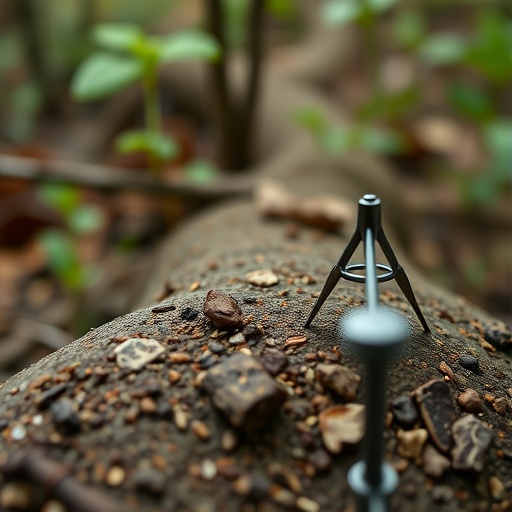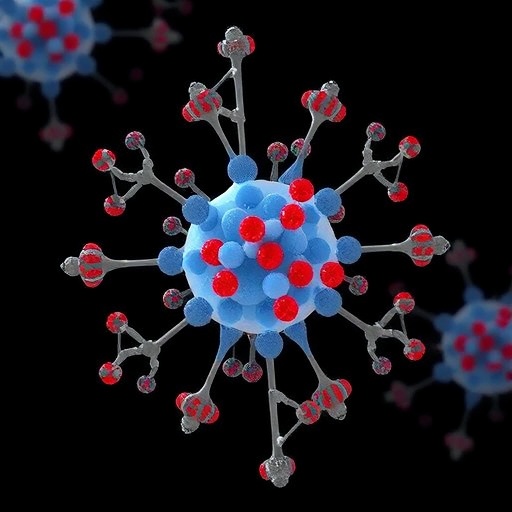
Revolutionizing Transjugular Intrahepatic Portosystemic Shunt Procedures: A Novel Algorithm for Needle Bending and 3D Path Planning
In the constantly evolving field of biomedical engineering, precision and innovation remain pivotal in enhancing interventional procedures. A new breakthrough study published in BioMedical Engineering OnLine presents a sophisticated algorithm designed to calculate the bending angle of puncture needles during transjugular intrahepatic portosystemic shunt (TIPS) procedures, coupled with three-dimensional visualized path planning. This advancement promises not only to augment procedural accuracy but also to improve patient outcomes in a critical area of hepatic interventions.
TIPS is a minimally invasive procedure widely used to manage complications of portal hypertension, such as variceal bleeding or refractory ascites. Despite its clinical importance, TIPS demands an extraordinary level of precision when navigating the puncture needle through the complex hepatic vasculature to achieve successful shunting. Conventional techniques rely heavily on the interventionalist’s experience to predict needle bending and trajectory, often posing challenges that can lead to prolonged procedural times or complications. The newly designed algorithm stands to transform this landscape by providing objective, reproducible calculations for needle bending angles and optimized puncture pathways.
At the heart of this innovation lies advanced image processing utilizing enhanced computed tomography (CT) data. The researchers employed thresholding segmentation methods to reconstruct a detailed three-dimensional map of the hepatic vascular architecture. This imaging foundation is vital as it delineates the crucial landmarks and target puncture points essential for interventional planning. The precision of such reconstructions enables the subsequent modeling steps to accurately reflect patient-specific anatomy, setting the stage for tailored procedural guidance.
The algorithm models the puncture needle using mathematic constructs—specifically, second-order Bézier curves and arcs. Bézier curves, often used in computer graphics and design for their smooth and controllable shapes, are ingeniously applied here to simulate the bending behavior of the flexible needle as it navigates the tortuous vascular anatomy. By selecting strategic bending points, the algorithm calculates the optimal bending angles necessary to traverse the hepatic vessels and reach the target in the least invasive manner. This approach bridges computational modeling with practical clinical application, ensuring that the modeled needle behavior aligns with actual physical constraints and medical objectives.
An integral aspect of the study was the validation of this algorithm through comprehensive clinical data analysis. Retrospective data from 32 patients undergoing successful TIPS procedures were scrutinized. This robust sample provided a real-world foundation for comparing the algorithm’s calculated needle bending angles to those observed clinically. Remarkably, the differences measured were minimal, with an average deviation of just over one degree, underscoring the algorithm’s precision.
Quantitative verification was further enhanced using Mimics software, renowned for its three-dimensional visualization capabilities in medical modeling. This platform allowed the researchers to corroborate the puncture pathways generated by the algorithm, verifying their feasibility and clinical relevance. Visualization not only demonstrates the practical reliability of the model but also serves as a potential training and planning tool for interventionalists who aim to simulate and optimize their procedural strategies prior to intervention.
The error margins identified between modeled puncture needle tips and actual needle positions were notably low—0.15 cm for the Bézier curve model and 0.19 cm for the arc model. These findings highlight the high fidelity of computational representation relative to the physical instrument, further reinforcing the potential for safe and efficient clinical translation. Precise modeling is essential to mitigating risks such as vessel injury, ensuring that the needle trajectory is both accurate and minimally disruptive.
Statistical analyses conducted within the study revealed significant equivalence between actual and calculated bending angles, with p-values less than 0.001, solidifying the algorithm’s validity. This statistically rigorous approach lends strong confidence to the medical community regarding the reliability of this computational tool. It also opens avenues for integrating algorithm-driven guidance systems directly into interventional suites, enhancing decision-making dynamics.
Beyond its immediate clinical application, this study exemplifies the broader trends in precision medicine, where patient-specific anatomic data fosters customized therapeutic approaches. The seamless integration of imaging, mathematical modeling, and clinical validation embodied in this work underscores a paradigm shift toward digital interventional planning that could extend to other vascular procedures and devices.
The implications extend further into medical education and training. Virtual simulations based on this algorithm can provide trainees with immersive environments to practice complex TIPS procedures, sharpening their skills without exposing patients to additional risks. This fusion of technological innovation with educational utility hints at a future where surgical proficiency is augmented through algorithmically informed rehearsal.
Nonetheless, it is important to recognize that while the study demonstrates promising results, ongoing advancements and real-time intraoperative adaptations remain crucial for widespread adoption. Future research may focus on automating the segmentation and path-planning processes, leveraging machine learning to refine predictions dynamically and respond to intraoperative changes.
In conclusion, this cutting-edge research introduces a potent algorithm that enhances the accuracy and efficacy of puncture needle navigation in TIPS procedures via precise bending angle calculations and 3D path planning. By aligning computational precision with clinical praxis, it heralds a new era in interventional radiology where technology empowers safer, faster, and more personalized patient care.
Subject of Research: Development and clinical validation of an algorithm to calculate bending angles and perform 3D path planning for puncture needles in transjugular intrahepatic portosystemic shunt procedures.
Article Title: Investigation of bending angle algorithm and path planning for puncture needles in transjugular intrahepatic portosystemic shunt.
Article References:
Liao, Q., Li, B., Hu, X. et al. Investigation of bending angle algorithm and path planning for puncture needles in transjugular intrahepatic portosystemic shunt. BioMed Eng OnLine 24, 66 (2025). https://doi.org/10.1186/s12938-025-01397-2
Image Credits: AI Generated
DOI: https://doi.org/10.1186/s12938-025-01397-2
Keywords: Transjugular intrahepatic portosystemic shunt, TIPS, puncture needle bending angle, path planning, Bézier curve modeling, 3D visualization, interventional radiology, computational algorithm, hepatic vasculature reconstruction
Tags: 3D path planning in biomedical engineeringadvanced CT data utilizationbioengineering breakthroughs in healthcarecomputational modeling for needle trajectorieshepatic vasculature navigationimage processing in medical proceduresimproved patient outcomes in TIPSminimally invasive hepatic interventionsneedle bending algorithmprecision in interventional proceduresTIPS procedure advancementstransjugular intrahepatic portosystemic shunt





